|
At the edge of the parking lot to the Natural
Stone Bridge, Karen Duquette paused to photograph some of nature's wonders. |
|
|
|
|
|
|
Suddenly Lee Duquette was
greeted by a friendly Norwegian Elkhound. Then a jealous dog approached
and sat there barking. (The two RV Gypsies had two Norwegian Elkhounds
when they lived in Connecticut) |
|
|
Below: The History of an underground
river and ancient riverbed: As the ancient river down-cut, it encountered
the marble that was possibly exposed through an unusual east-west trending
fault. Eventually, the marble pirated away the water and a new river
bed and cave system was created. |
|
|
|
|
|
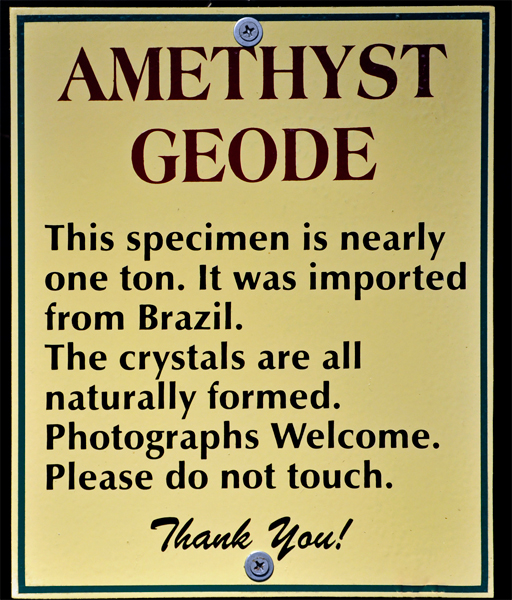 |
|
|
|
|
Below: Trout Brook - Once
a mighty river, most of the year it is a shallow brook with many boulders
popping up. This allows the river to warm up considerably in the summer
time. Trout Brook is home to many creatures including: rainbow and brown
trout, suckers, snapping turtles and yes, leaches. |
|
|
|
|
 Logging
in the Adirondacks was one of the main industries from the 1800s until
the present. It reached its peak in 1905 when 700 million feet of board
were cut for use in construction. Rivers were used for transporting
timber. About 200,000 logs were railed along the Hudson River in 1904.
To prevent logs from jamming into the caves, the loggers constructed
wood dams to divert the water and logs. But spring floods overwhelmed
the dams and there are still a number of ancient logs preserved under
the stone bridge. The sawmill was built by Jacob Van Benthuysen He received
this property for service in the Revolutionary War and it has been in
the family for over 200 years. Logging
in the Adirondacks was one of the main industries from the 1800s until
the present. It reached its peak in 1905 when 700 million feet of board
were cut for use in construction. Rivers were used for transporting
timber. About 200,000 logs were railed along the Hudson River in 1904.
To prevent logs from jamming into the caves, the loggers constructed
wood dams to divert the water and logs. But spring floods overwhelmed
the dams and there are still a number of ancient logs preserved under
the stone bridge. The sawmill was built by Jacob Van Benthuysen He received
this property for service in the Revolutionary War and it has been in
the family for over 200 years.
|
|
|
|
|
|
|
Below: The trail and stairs leading to
the Meditation Isle. |
|
|
|
|
Below: The two RV Gypsies
entered Meditation Isle and got their first look at the Natural Stone
Bridge. Cavers mapping these caves (2003-2008) have determined that
the Stone Bridge is the largest cave entrance in the East. It is 180-feet
wide and 62-feet high. It contains an underground lake right below the
gift shop. These caves were formed during the retreat of the Wisconsin
glacier about 10 -13 thousand years ago. |
|
|
Below: Karen Duquette looked
away from the Natural Stone Bridge and aimed her camera upwards at a
small wooden bridge crossing over the creek. |
|
|
Below: Lee Duquette was a bit further ahead
on the trail and photographed Karen Duquette who was still down below.
Nobody else was in the area at this time. |
|
|
|
|
|
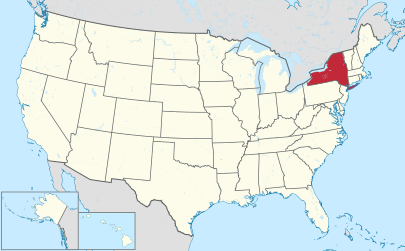
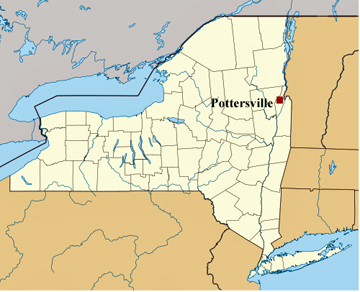
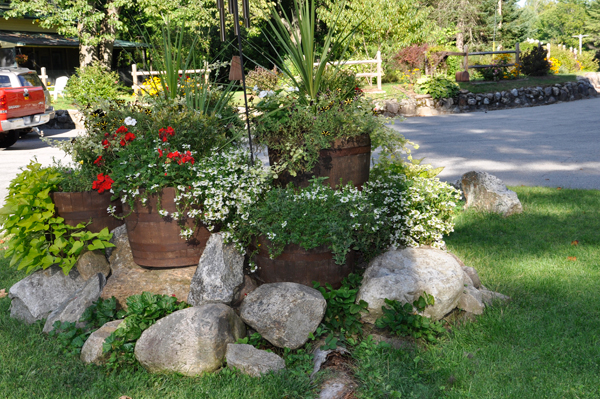
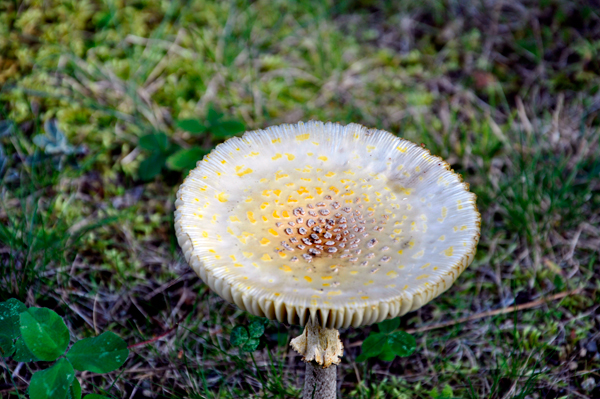
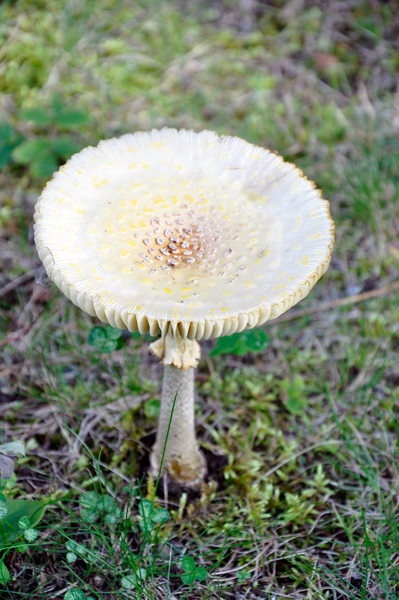
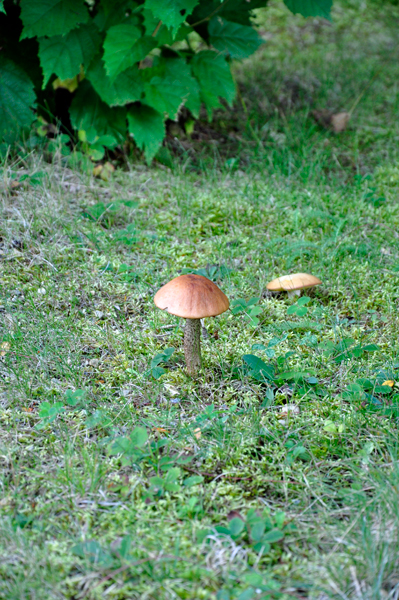
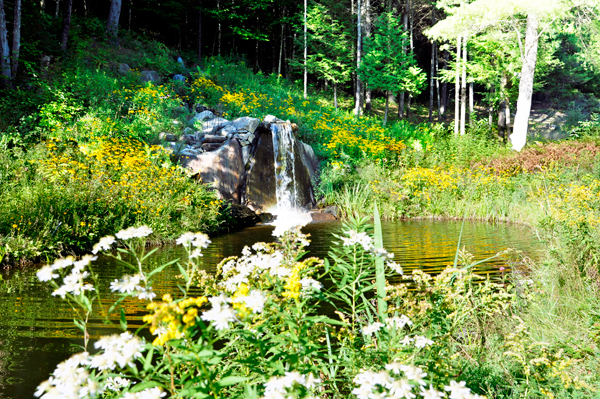
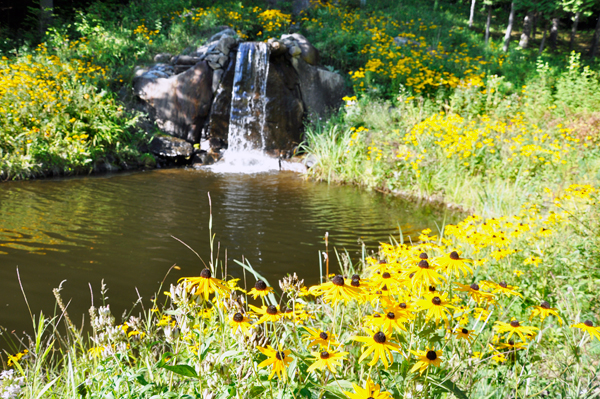


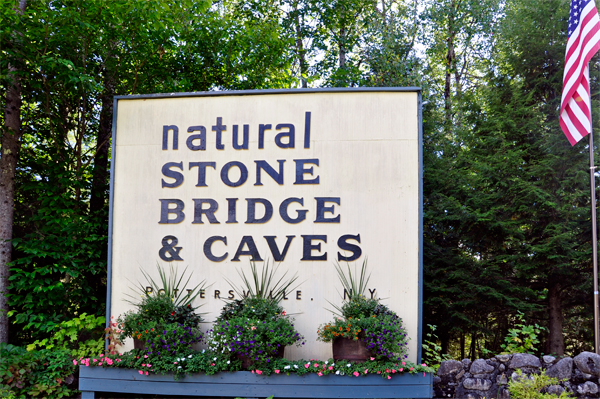

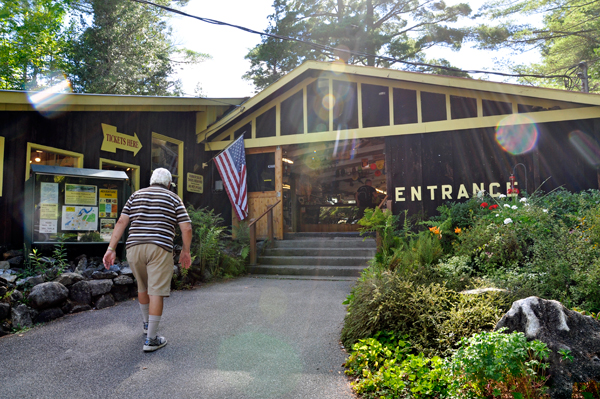
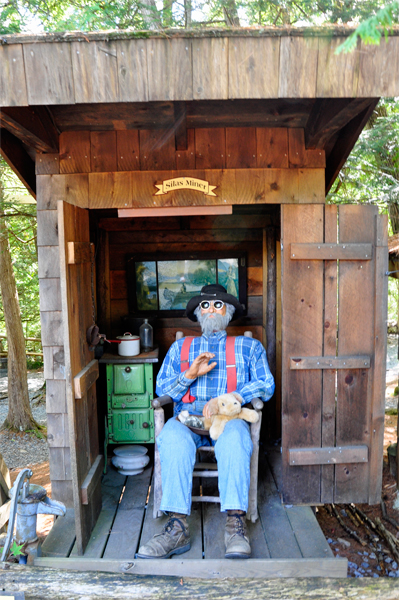
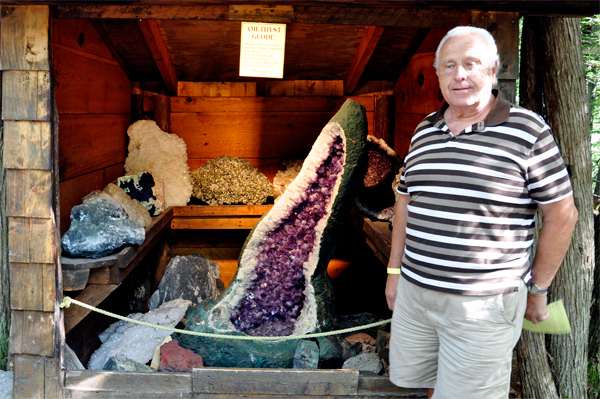

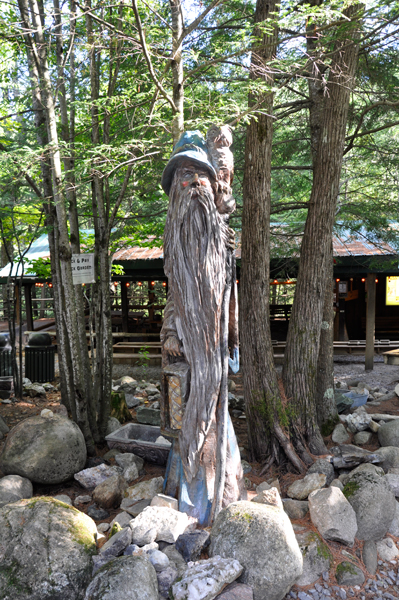

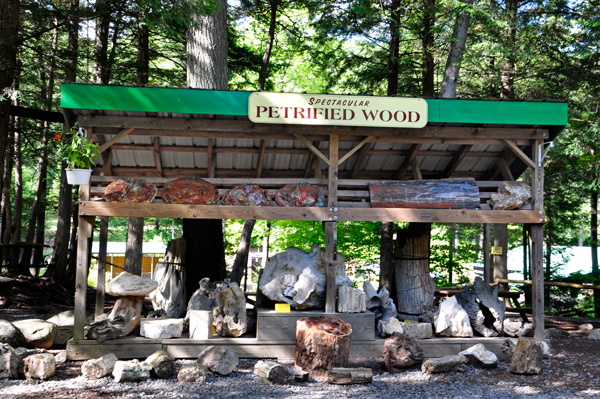

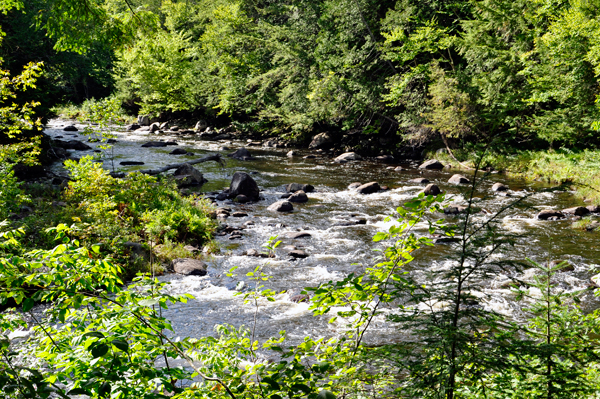
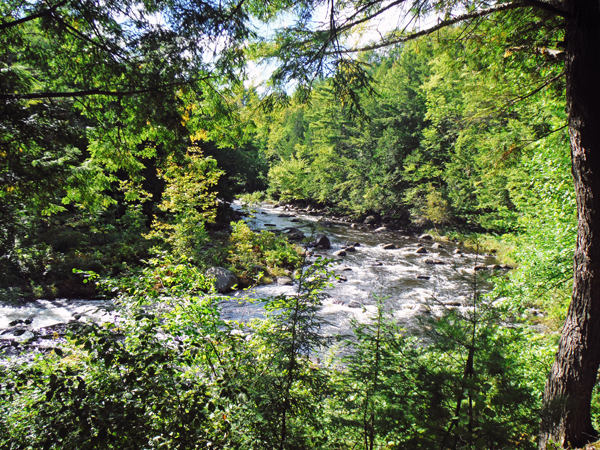
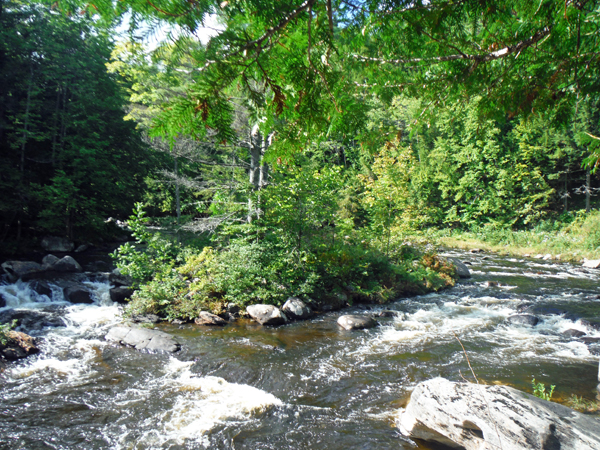
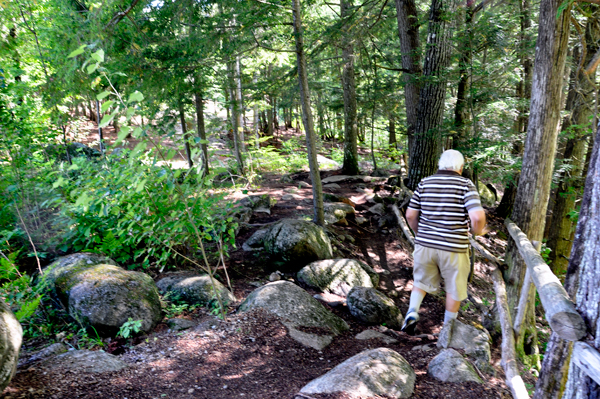
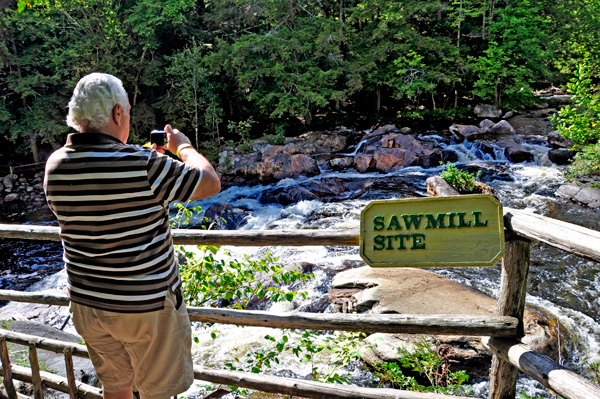
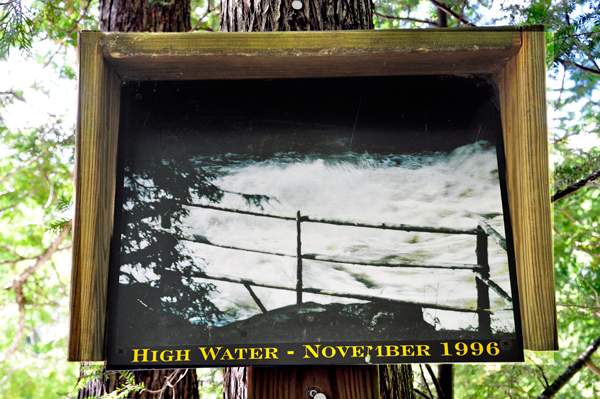
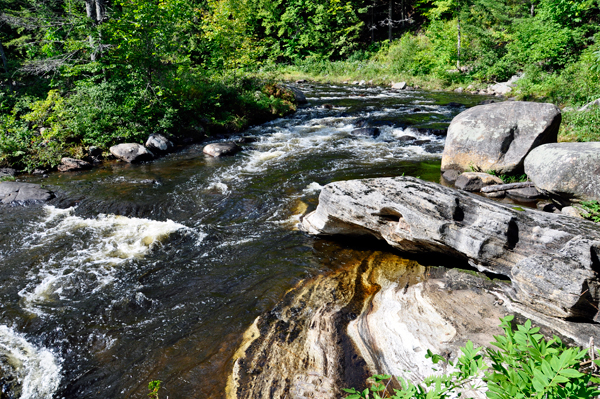
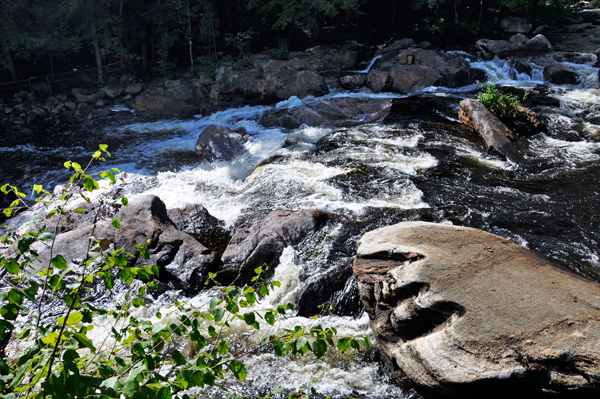
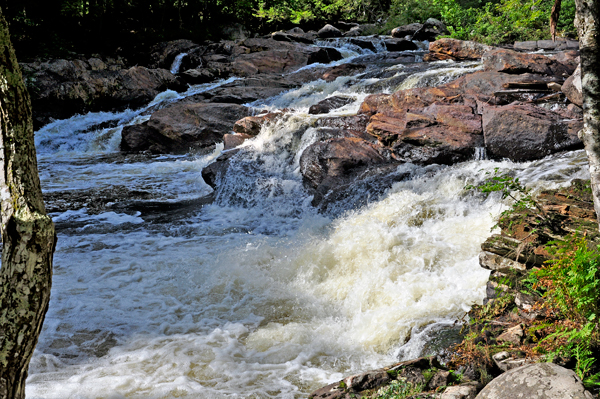
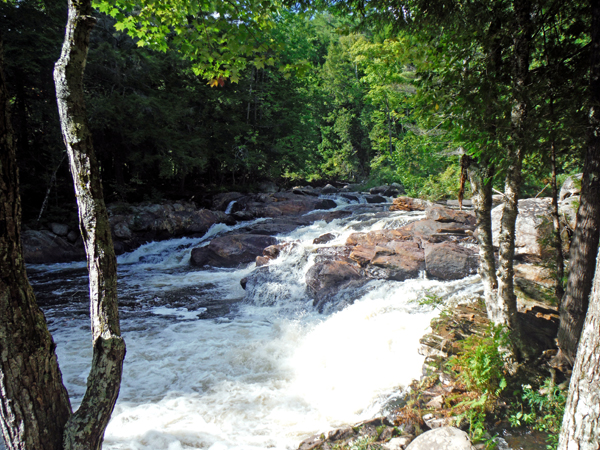
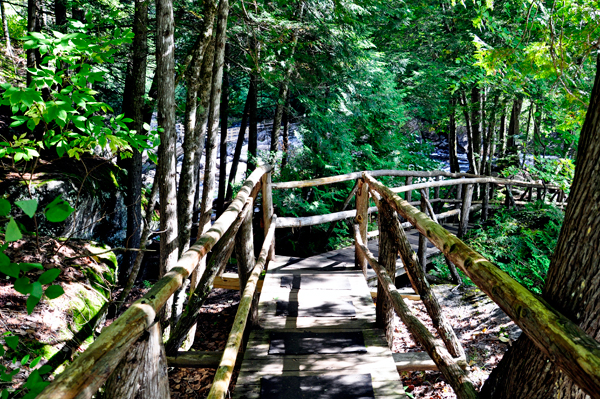
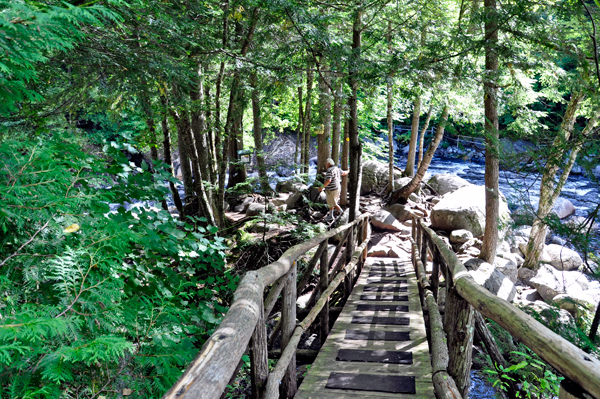
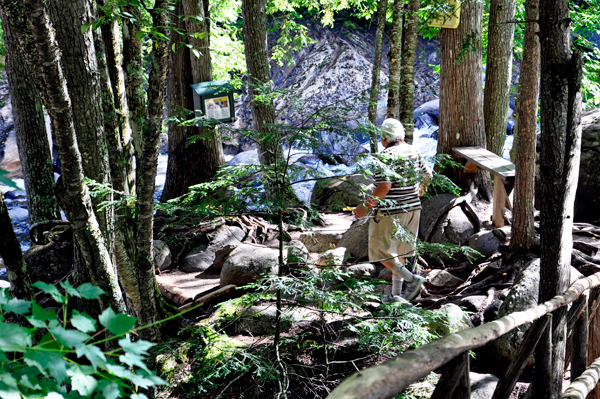
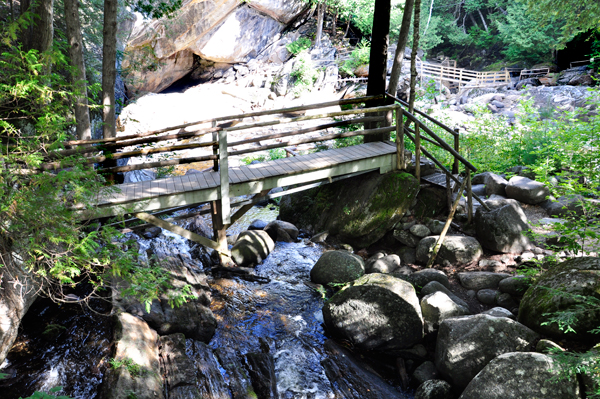
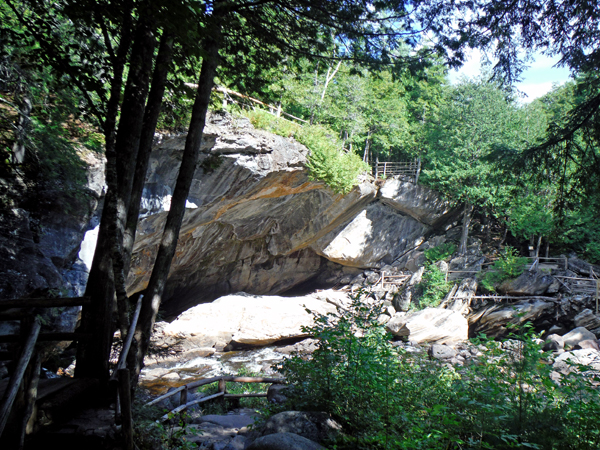
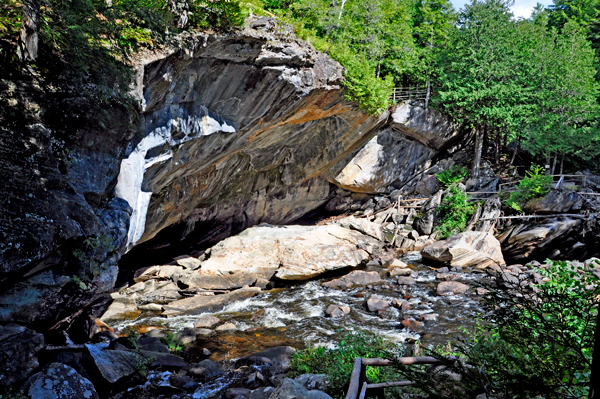
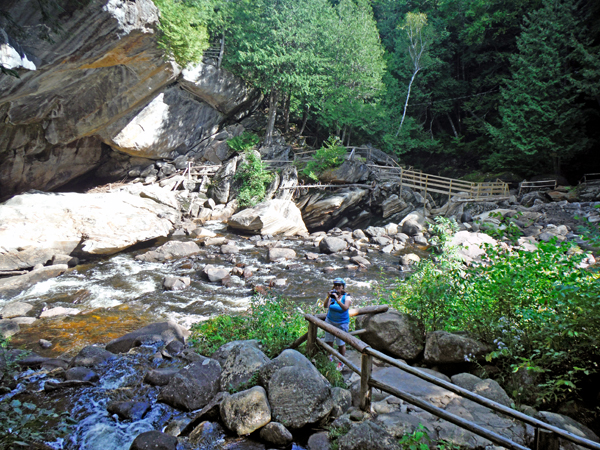
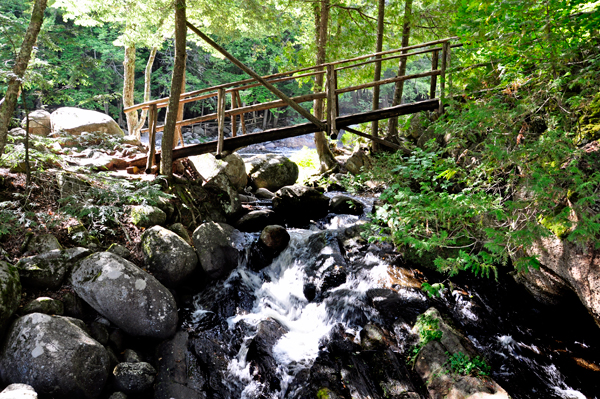
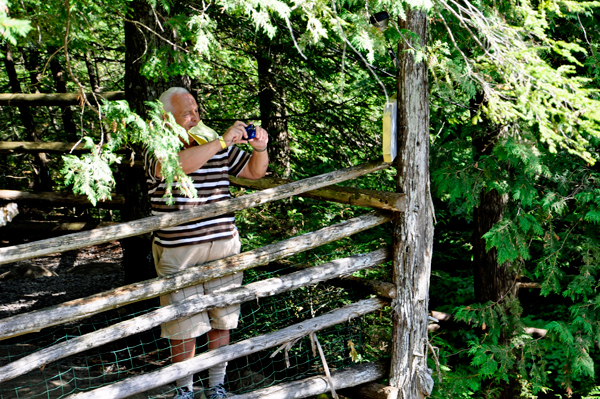
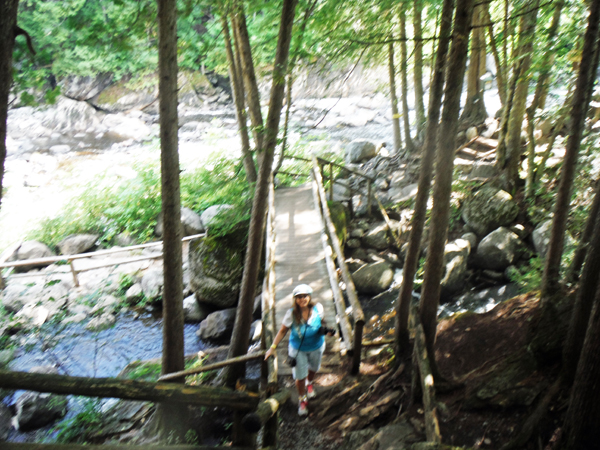
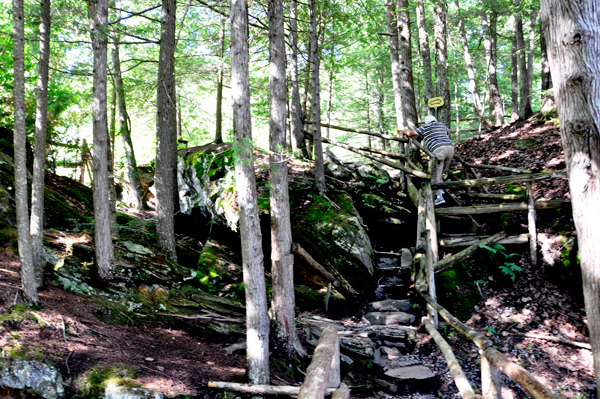
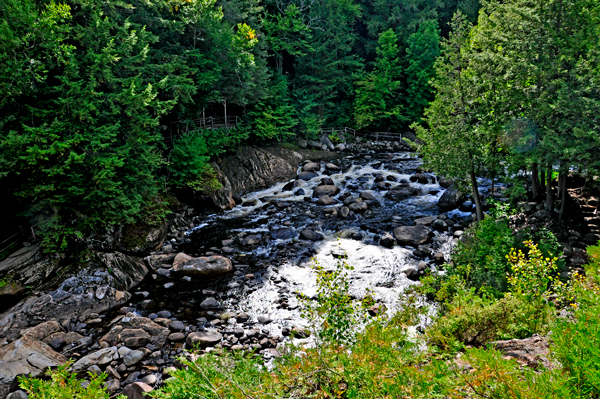
 Logging
in the Adirondacks was one of the main industries from the 1800s until
the present. It reached its peak in 1905 when 700 million feet of board
were cut for use in construction. Rivers were used for transporting
timber. About 200,000 logs were railed along the Hudson River in 1904.
To prevent logs from jamming into the caves, the loggers constructed
wood dams to divert the water and logs. But spring floods overwhelmed
the dams and there are still a number of ancient logs preserved under
the stone bridge. The sawmill was built by Jacob Van Benthuysen He received
this property for service in the Revolutionary War and it has been in
the family for over 200 years.
Logging
in the Adirondacks was one of the main industries from the 1800s until
the present. It reached its peak in 1905 when 700 million feet of board
were cut for use in construction. Rivers were used for transporting
timber. About 200,000 logs were railed along the Hudson River in 1904.
To prevent logs from jamming into the caves, the loggers constructed
wood dams to divert the water and logs. But spring floods overwhelmed
the dams and there are still a number of ancient logs preserved under
the stone bridge. The sawmill was built by Jacob Van Benthuysen He received
this property for service in the Revolutionary War and it has been in
the family for over 200 years. Please continue on to
Please continue on to